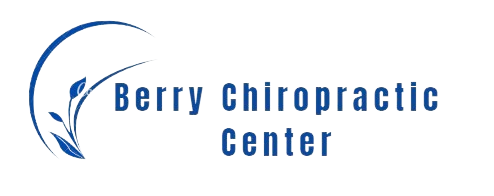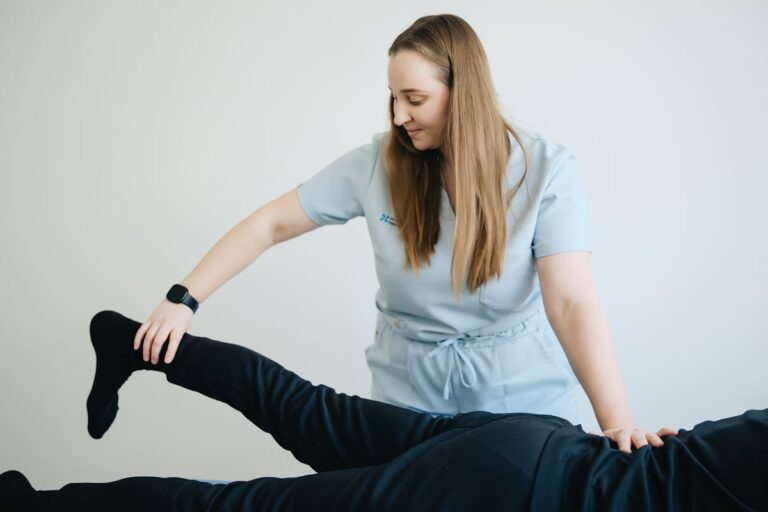In recent years, chiropractic care has emerged as a holistic, non-invasive alternative for the management of musculoskeletal conditions, including sprains and strains. Rather than relying solely on medication or surgery, this approach emphasizes the body’s inherent capacity for healing, aiming to restore function and mitigate pain. However, the full potential of chiropractic treatment in addressing sprains and strains is still often overlooked. Let’s explore the efficacy of chiropractic techniques in fostering recovery, enhancing strength, and reducing the risk of re-injury.
Understanding Sprains and Strains
Sprains and strains, common injuries affecting the muscles and ligaments, contribute considerably to the global burden of musculoskeletal disorders. These conditions, often mistaken for each other due to similar symptoms, have distinct differences. A sprain refers to the stretching or tearing of ligaments, the fibrous bands of tissue linking bones together, while a strain involves injury to the muscle or the tendon that anchors muscle to bone. One of the common misconceptions is that these injuries heal on their own without intervention, which can lead to chronic issues. A properly guided injury recovery process is essential, involving initial rest, followed by progressive exercises to restore function, strength and flexibility. Understanding these complexities is crucial for effective management and prevention of re-injury.
The Role of Chiropractic Care
Steering the path to recovery from sprains and strains, chiropractic care plays a significant role. The chiropractic philosophy emphasizes the body’s innate healing capability, suggesting that ideal health can be achieved through proper alignment of the spine. By employing manual manipulation techniques, chiropractors aim to restore normal movement and function to injured areas. This not only aids in alleviating pain but also promotes injury recovery by enhancing circulation and reducing inflammation. In addition, chiropractic care can potentially mitigate the risk of re-injury by strengthening weakened muscles and joints. Consequently, chiropractors provide a holistic, non-invasive, and drug-free approach to treat sprains and strains, underscoring the vital part they play in the broader spectrum of injury management and recovery.
Treating Strains With Chiropractic Methods
Strains, caused by overstretching or tearing of muscles and tendons, can be effectively treated with various chiropractic methods. To understand the mechanism behind this treatment, it is essential to first comprehend the fundamental principles of chiropractic care. We will then explore the specific techniques used to treat strains and the benefits derived from this non-invasive, holistic approach.
Understanding Chiropractic Treatment
While it may initially seem counterintuitive, chiropractic treatment has proven to be an effective method for treating strains in various parts of the body. The chiropractic benefits extend beyond traditional pain relief, providing a holistic approach to injury recovery. Chiropractors focus on the musculoskeletal system, especially the spine, addressing imbalances that may contribute to strain injuries. They employ a range of non-invasive techniques, from spinal adjustments to therapeutic exercises, promoting natural healing and recovery. Chiropractic treatment encourages the body’s self-healing abilities, reducing the need for medication and invasive procedures. It aims to restore the normal function of the affected areas, enabling patients to return to their daily activities with minimal disruption. As a result, understanding chiropractic treatment is essential for individuals seeking extensive and sustainable recovery methods.
Chiropractic Techniques for Strains
Building upon the understanding of chiropractic treatment, the focus now turns to specific techniques used for treating strains. Two primary methods involve manual therapy and rehabilitation exercises.
Manual therapy includes manipulation and mobilization techniques. Manipulation involves controlled, sudden force to improve range and quality of motion, while mobilization involves slow, measured movements to stretch muscles and joints. These techniques aim to alleviate strain-related pain and improve functionality.
Rehabilitation exercises, meanwhile, are customized to each patient, based on their specific needs and circumstances. These exercises aim to restore normal muscle function, promote good posture, and prevent future strains. They may include stretching, strengthening, and low-impact aerobic conditioning. Through these techniques, chiropractic care offers a holistic, non-invasive approach to treating strains.
Benefits of Chiropractic Care
The integration of chiropractic care in treating strains provides an array of notable benefits. Chiropractic adjustments primarily focus on the alignment of the musculoskeletal system, facilitating the body’s innate ability to heal itself. This holistic healing approach not only treats the symptoms but also addresses the underlying causes, greatly reducing the risk of recurrent strains.
One key benefit of chiropractic care is the non-invasive nature of the treatments. This reduces the reliance on medications and their associated side effects. In addition, chiropractic care promotes overall wellness by enhancing body functionality, improving posture and boosting the immune system. Regular chiropractic adjustments can also help manage chronic pain, improve sleep quality, and reduce stress levels. As a result, integrating chiropractic care into a treatment plan for strains can deliver substantial long-term health benefits.

Chiropractic Approaches to Sprains
In our exploration of chiropractic care for sprains, it becomes essential to first understand the symptoms that may indicate a sprain. Once these symptoms have been accurately identified, we can then examine the various chiropractic treatment methods available. This will facilitate a thorough understanding of how these treatments can be implemented to effectively manage and potentially resolve sprain-related issues.
Identifying Sprain Symptoms
Ever wondered how chiropractors detect sprains? A sprain diagnosis begins with a detailed examination of the patient’s history, followed by a thorough physical examination. Chiropractors are trained to recognize the physical signs of a sprain, which may include pain, swelling, bruising, and a limited range of motion. Symptom comparison is an integral part of this process, as it aids in distinguishing a sprain from other injuries, such as fractures or strains. The location and severity of pain, along with the ability or inability to bear weight or use the affected joint, are all considered during the diagnosis. Understanding these symptoms is vital to identifying sprains and ensuring appropriate treatment is administered, setting the stage for effective recovery.
Chiropractic Treatment Methods
While many might associate chiropractic care primarily with spinal adjustments, this field of therapy extends to treating sprains as well. Chiropractic techniques not only help in realigning the spine, but also in promoting injury recovery in damaged muscles and ligaments. The chiropractic treatment for sprains involves an all-encompassing approach that includes manipulation, mobilization, and adjunctive therapies.
Manipulation involves controlled force to a joint, which provides relief and restores function. Mobilization, on the other hand, involves moving and stretching the muscles and joints to increase the range of motion. Adjunctive therapies could include heat, ice, electrical stimulation, or ultrasound to reduce inflammation and speed recovery. These techniques work together to facilitate the body’s innate healing capabilities, accelerating the recovery from sprains.
Benefits of Chiropractic Treatment
A substantial number of individuals are turning to chiropractic treatment for sprains and strains, reaping a plethora of benefits in the process. Chiropractic techniques, such as spinal manipulation or adjustments, can provide immediate relief from pain and discomfort associated with these injuries. By restoring alignment and balance within the body, these techniques can also help improve mobility and flexibility.
Moreover, chiropractic treatment can considerably improve recovery timelines. By focusing on the root cause of the strain or sprain, rather than just the symptoms, chiropractors can facilitate a more thorough, faster healing process. Additionally, the holistic approach taken by chiropractors can lead to a stronger, more resilient body, reducing the likelihood of recurrent injuries. These benefits make chiropractic care an effective treatment option for sprains and strains.
Preventing Future Injuries
To minimize the risk of future sprains and strains, it is essential to take proactive measures. A key aspect of injury prevention is lifestyle modifications. This can include incorporating regular exercise into your routine, particularly activities that strengthen muscles and improve flexibility. A balanced diet also contributes to maintaining healthy muscle tissue, reducing the chances of injuries. Ergonomics play a significant role too; maintaining good posture and using proper lifting techniques can prevent undue stress on the body. Regular chiropractic check-ups can help identify potential issues early and provide a customized approach to prevent injuries. Finally, understanding your body’s limitations and avoiding overexertion can go a long way in staving off future sprains and strains.
Case Studies on Chiropractic Success
Having established the importance of injury prevention, it is equally beneficial to explore the actual effects of chiropractic treatment on sprains and strains. Several case studies demonstrate the exemplary chiropractic outcomes in treating these injuries. One such case involves a marathon runner who, after experiencing a severe ankle sprain, resumed training within a few weeks following chiropractic care. Another patient testimonial tells of a manual laborer who, suffering from a back strain, returned to work fully functional after a series of chiropractic adjustments. These cases, among numerous others, affirm the significant role of chiropractic care in recovery. They provide concrete evidence of the remarkable healing potential of chiropractic treatment for sprains and strains.
Finding the Right Chiropractor
How does one go about finding the right chiropractor? The process involves evaluating chiropractor qualifications and considering patient reviews. The chiropractor’s qualifications are essential; they should have an accredited degree from a reputable chiropractic institution and valid licensure for practice. In addition, they should have a solid background in treating sprains and strains, given the focus of this article. Patient reviews can also shed light on the chiropractor’s competence and bedside manners. These reviews often provide insights on the practitioner’s skills, communication, and overall patient satisfaction. Remember, a suitable chiropractor is not just about skills and qualifications. The best fit also involves a chiropractor that aligns with your comfort and communication needs.
Frequently Asked Questions
Does Insurance Typically Cover Chiropractic Treatments for Sprains and Strains?
Insurance coverage for treatments of sprains and strains can vary. Most insurance plans do encompass chiropractic care, but it’s advised to verify with your specific provider to understand potential out-of-pocket treatment costs.
Are There Any Risks or Side Effects Associated With Chiropractic Treatment?
Chiropractic safety is generally high, but potential risks include temporary discomfort, headaches, and, rarely, serious complications. Treatment effectiveness varies, and individual patient responses to chiropractic care for musculoskeletal issues can differ considerably.
What Is the Average Recovery Time After Chiropractic Treatment for Sprains and Strains?
The average recovery timeline post-treatment varies between individuals, typically ranging from a few weeks to several months. Treatment factors such as severity of injury, patient’s age, and overall health greatly influence this duration.
How Often Should I See a Chiropractor for Sprain and Strain Treatment?
The frequency of chiropractic visits for sprain and strain treatment varies based on individual conditions. However, following frequency guidelines guarantees treatment effectiveness. Typically, 2-3 sessions per week for 4-6 weeks are recommended for ideal recovery.
Can Chiropractic Care Be Combined With Other Treatments for Sprains and Strains?
Yes, chiropractic modalities can indeed be combined with other treatments for sprains and strains. Complementary therapies such as physiotherapy, massage, or acupuncture can enhance the effectiveness of chiropractic care, promoting faster recovery and ideal health.






